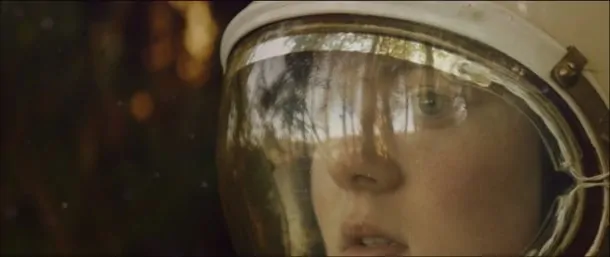How hard is it to tell a compelling story in a film just 13 minutes long?
If you’re Oregon-based filmmakers Zeek Earl and Christopher Caldwell apparently it’s pretty easy. Well, at least it looks easy. Their new sci-fi short Prospect recently premiered at SXSW and is now available on Vimeo for all to enjoy:
What first grabbed my attention about this Kickstarter-backed short film was the fact that it was shot with the Blackmagic Cinema Camera (two of them, with anamorphic lenses no less). I enjoy watching projects filmed using the new camera – it has the vaunted “filmic” look that indie filmmakers lust for, at a ridiculously low price (by cinema camera standards at least). Image quality is leaps and bounds beyond what we’re used to seeing with digital cameras.
But what kept me glued for the entire 13 minutes was–gasp–the story.
In a short amount of time Earl and Caldwell establish a familiar and, at the same time, unique visual identity. Prospect does look inspired by Alien and Blade Runner, yet it looks wholly different. For a film with a $17,000 budget they’ve done a remarkable job.
This is not our world.
The story concerns a father and daughter (The Last of Us?). Miners in some distant world where the air is unsafe to breathe, they’re searching for mysterious, precious metals. In rapid order we get to know them, to care for their plight; dialog is genuine, acting above average. A mysterious antagonist is introduced. When the daughter rises to the occasion it’s hard not to think we’re watching a young Ripley in training.
As I watched the short, I was reminded of the power of the story.
Yes, this is a beautiful looking short. But there’s no shortage of beautiful looking stuff – Vimeo is overflowing with it. The clever script, strong acting and smart editing, not to mention the gorgeously haunting score, conspire to engage the audience. As is the trend these days, the film employs that low-contrasty aesthetic. Remember the style of high-contrasts, dark blacks, vignettes popularized by Top Gear ? Well, like black/silver stereo components, flood/skinny jeans and grunge/pop the cycle has gone fully the opposite direction. I suspect a lot of that has to do with the new breed of cinema cameras, like the Blackmagic Cinema Cameras, that allow for wide dynamic range at prices previously unfathomable.
I first came across the project on nofilmschool.com where the filmmakers wrote a very interesting guest post about how Prospect was made. This is their second short. Their goal is to build credibility, raise enough money, and go on to shoot a feature. I was blown away by the 17-person team’s attention to detail and commitment.”Be prepared to work,” they say when describing some keys to the success of the project. A few years back director Jeffrey Goodman told me that “the fish don’t jump in the boat” – that every step in getting a film project to the big screen is hard, hard work. It took him the better part of seven years to get his first film The Last Lullaby made. He first generated interest with a short version that made the film festival rounds. Then he painstakingly spent years (pre-Kickstarter) amassing the film’s $5 million budget by breaking investments into $50,000 chunks and tirelessly knocking on the proverbial doors of would-be investors. Rejection. Your new best friend.
We are aliens here.
Aside from following cinema camera trends, I also like to follow emerging filmmakers. It’s always interesting to see the creative decisions being made. And following burgeoning careers. Clearly, Zeek Earl and Christopher Caldwell should be on this must-follow list. They say they made the film available free–in lieu of seeking distribution–so that as many people could see it as possible. I think that’s a smart move. Back in college in Canada I played keyboards for two acts. One was a studio/electronica group. We mailed record companies, crossed our fingers. But no one heard the music, except for us (and unwitting family members). The other was a live pop-rock band. We played a lot. And steadily built up a fan base. Eventually we made it to radio. If it’s one thing I learned it’s that getting out there, getting exposure, learning from mistakes, trying again, and being heard and being seen are instrumental to success.
Ultimately, Prospect achieves filmmaker Valhalla. It commands attention. Intrigues the audience. Makes us care. And, best of all, leaves us wanting more.
Take a look at how creativity, hard work and a Washington Olympic Peninsula forest can supercharge our imaginations:
[nofilmschool.com: BMCC, Anamorphic, & Kickstarter: How the Beautiful Sci-Fi Short ‘Prospect’ Was Made]



